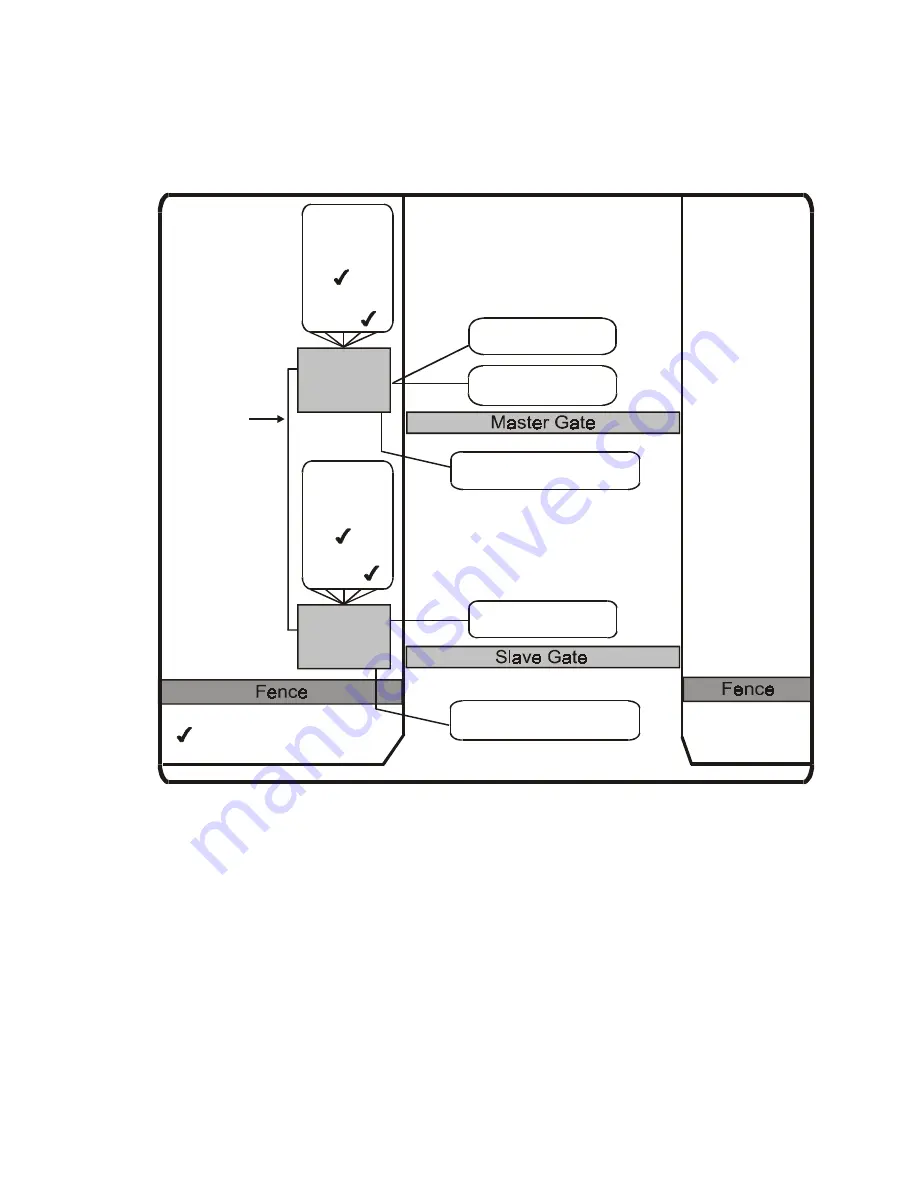
Rev C
Doc 6001242 (01-20273)
29 of 53
3. TRAP GATE DETAILS
The Trap gate is typically used in secured sites for screening incoming and/or outgoing traffic. In the
Trap configuration, only one gate opens at a time, "trapping" the vehicle between gates. Due to its
ease of use, Slide gates are most popular for the Trap configuration. The Trap configuration can
consist of any LiftMaster model for Master, and a model SL 1000-B1 (slide gate) or BG 3000-B1
(barrier gate) for Slave.
NOTE:
The SW 2000-B1 (swing gate) may not be used for Slave.
STREET
COMPLEX
Gate
Operator
Master
Gate
Operator
Slave
Inside Interrupt
Loop
Shadow Loop
(swing gate only)
Outside Interrupt
Loop
Inside Interrupt
Loop
Outside Interrupt
Loop
MASTER
INPUTS:
Radio
Cycle
Interrupt Bar
Fire
MagLock
Manual
Inputs
SLAVE
INPUTS:
Radio
Cycle
Interrupt Bar
Fire
MagLock
Manual
Inputs
SWITCH S1
SETTINGS:
Slide: Unit
Option
Timer: Unit
Option
Retry: Unit
Option
ATG: ON
Master: ON
Trap: ON
SWITCH S1
SETTINGS:
Slide: Unit
Option
Timer: Unit
Option
Retry: Unit
Option
ATG: OFF
Master: OFF
Trap: OFF
1204F22
Master/
Slave
Cable
: Affects both units.
Figure 18. Typical Trap Gate Installation.
HOW IT WORKS:
•
In normal operation, one gate must completely close before the other opens, so only one gate is
open at a time. As soon as one gate closes, the second gate automatically opens. If the second
gate does not open within 10 seconds, the first gate reopens to let the vehicle exit the trap area.
•
ATG (Anti-TailGating) is always active for both Master and Slave gates. Each gate closes as soon
as its Inside Interrupt loop clears.
•
Faults and Manual Input Commands in one unit affect both units.
•
A continuous FIRE or Manual OPEN input in either gate opens the gates and holds them open.
•
If a vehicle stalls between the gates and they close, they can be opened by a CYCLE or RADIO
command, or by driving over: the Master unit Outside Interrupt Loop, the Slave unit Inside Interrupt
Loop (SLIDE=ON only), or the (optional) Exit Loop.
















































